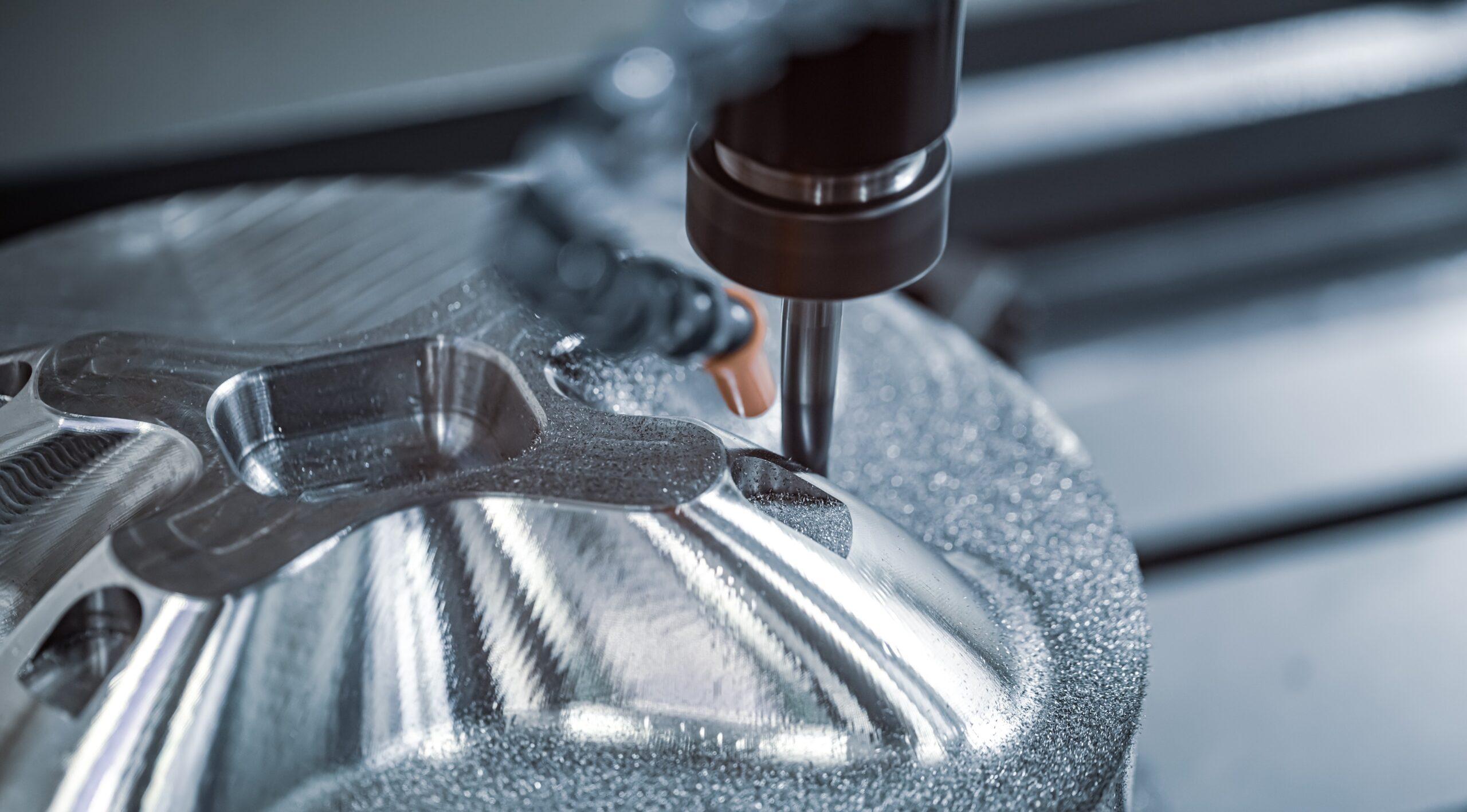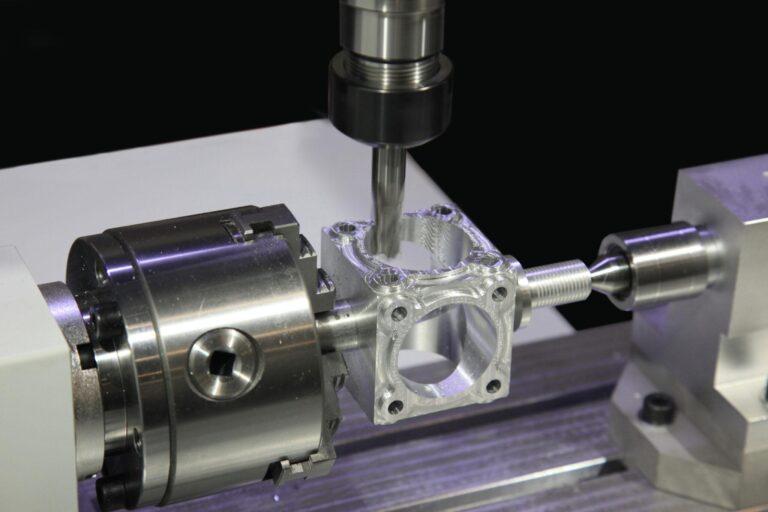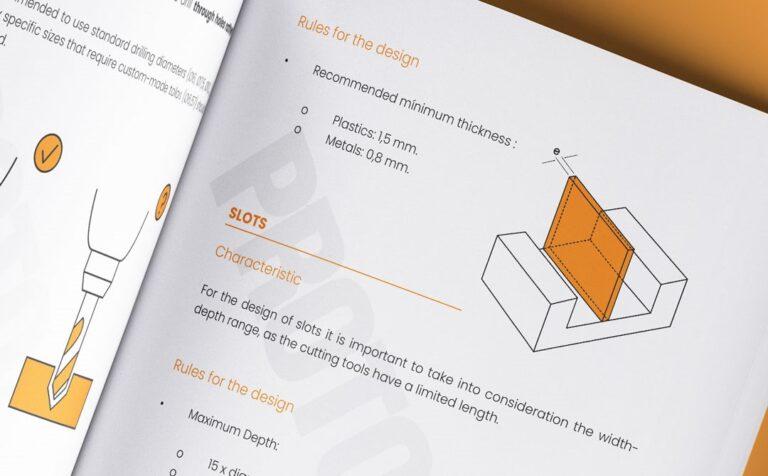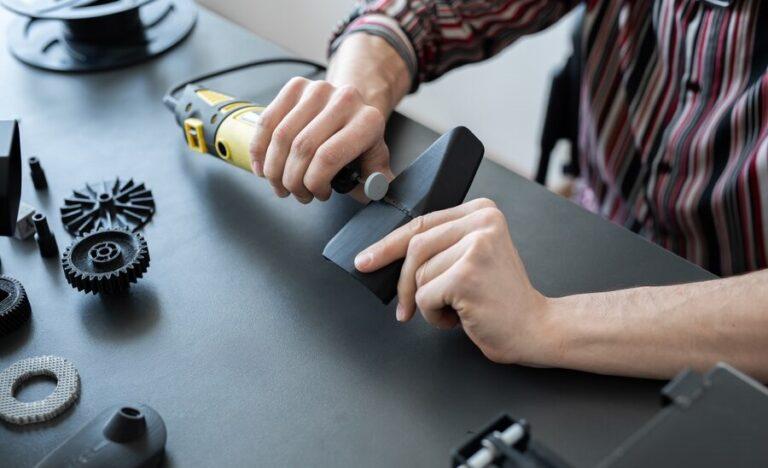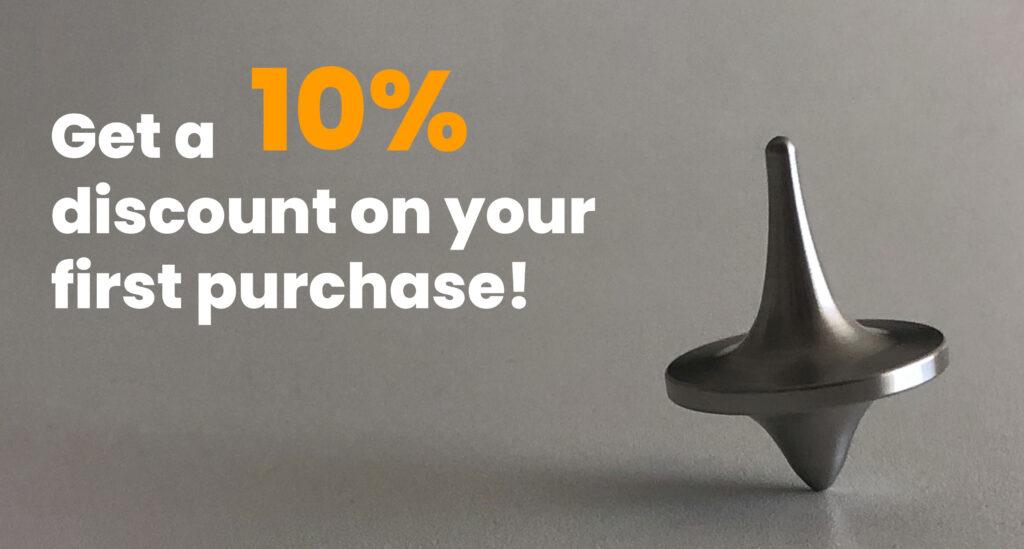In CNC machining, each phase of the process has a specific purpose. Understanding the difference between roughing and finishing not only optimizes time and materials, but also helps to improve the final cost and quality of the part.
In this article we analyze both processes, their differences and how to combine them efficiently.
What is rough machining?
Rough machining is the initial phase of the CNC machining process. Its main purpose is to quickly remove large amounts of material from the initial block, in order to approximate the final shape of the part. During this stage, the aim is not to obtain high precision or a good surface finish, but to prepare the volume of the part so that it can be refined later.
Robust tools are used in this phase, allowing deep passes and high feed rates. Cutting parameters are aggressive to maximize material removal efficiency. It is common to leave a small layer of unmachined material that will be removed in the finishing phase, ensuring that the final part meets the required tolerances.
What is finish machining?
Finish machining is the final stage of the process, and its objective is to obtain the exact dimensions, specified tolerances and desired surface finish. Unlike roughing, this stage works with light passes and softer cutting parameters to avoid deformations and achieve high surface quality.
The tools used in finishing are more precise, generally of smaller diameter or with geometries that allow fine details to be achieved. It is also important that the machine is correctly calibrated and that the clamping conditions are stable, to avoid deviations that could affect precision.
Main differences between roughing and finishing machining
Although both processes are part of the same machining sequence, their approaches, tools and objectives are clearly different. Knowing these differences is key to making sound decisions in the design and planning of part manufacturing. The following is a summary of the main contrasts between rough and finish machining:
- Objective: Roughing focuses on removing material quickly, while finishing aims to improve accuracy and surface finish.
- Tooling: Roughing uses robust, large-diameter tools; finishing uses finer tools, with greater precision.
- Cutting parameters: Roughing works with deep, aggressive passes; finishing requires soft, light passes.
- Machining time: Roughing is usually faster in volume, but requires more passes. Finishing is slower but with less material removal.
- Surface quality: Roughing produces a rougher surface; finishing produces smooth surfaces.
- Dimensional accuracy: Roughing is less accurate, finishing allows tighter tolerances to be achieved.
How to optimize the process to reduce time and costs?
The right combination of roughing and finishing allows for quality parts without over-processing or wasting resources. Here are some key tips:
- Leave a sufficient margin for roughing: Leave between 0.2 and 1 mm of material for finishing, depending on the type of part and material.
- Use specific tools for each phase: Roughing tools usually have geometries that favor chip evacuation, while finishing tools prioritize precision.
- Avoid overfinishing: Sometimes unnecessary passes are spent on finishing. Adjust design tolerances to avoid extra work.
- Take advantage of advanced CAM strategies: Strategies such as adaptive clearing in roughing can reduce machining time by up to 50%.
- Reduce tool changes if possible: Some manufacturers offer mixed end mills that allow roughing and finishing to be done on a single tool when accuracy is not critical.
In short, we can say that understanding and correctly applying the roughing and finishing phases is essential to obtain quality parts, in less time and at lower cost. An efficient machining strategy is not about removing more material or achieving an extreme finish, but about finding the perfect balance between speed, accuracy and resources.
At Proto&Go! we support this approach by providing access to rapid prototyping technologies so that ideas don’t remain on paper. We offer the best CNC machining, 3D printing and vacuum casting of silicone molds for your parts and prototypes. You can request your quotation through the form on our website in a quick and easy way.
What are you wating for? Request your quote now!

